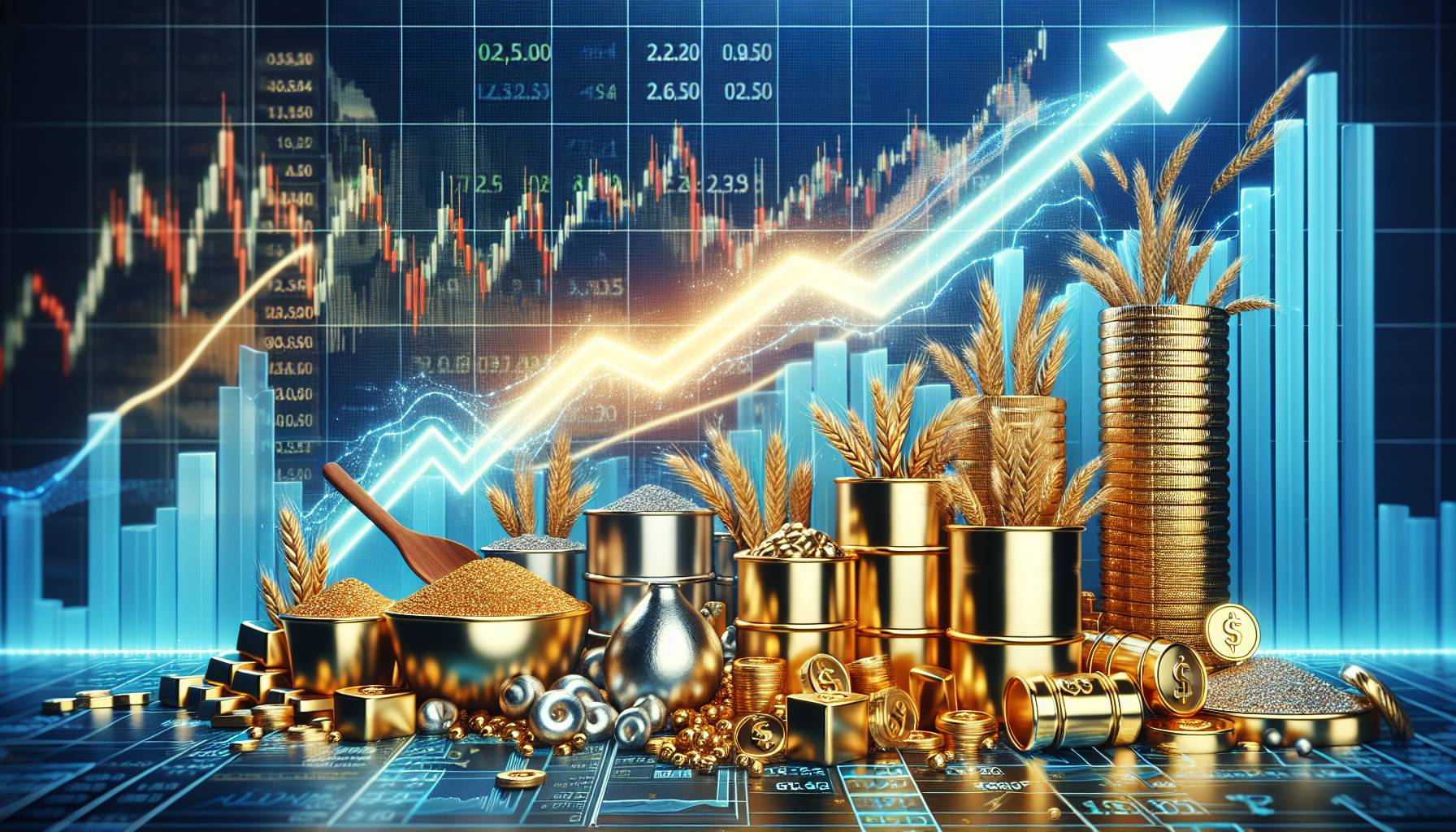
Trends in the precious metals market
The prices of gold have proven to be robust amidst persistent global economic uncertainty, with spot prices remaining around USD $2,320 per ounce. This strength is primarily supported by ongoing central bank acquisitions, especially from emerging economies, and ongoing concerns regarding inflation that have kept investor demand for safe-haven assets high. In Australia, there is a strong demand for physical bullion, particularly in the retail sector, as investors aim to protect themselves against currency fluctuations and macroeconomic challenges.
Silver has also gained momentum, trading at approximately USD $29 per ounce, driven by a recovery in industrial demand and its dual function as both a precious and industrial metal. With global green energy initiatives accelerating, particularly in photovoltaic applications, Australian miners with silver interests are preparing for greater export opportunities. The local mining industry is closely monitoring price shifts as they influence project viability and future hedging strategies.
Markets for platinum and palladium continue to encounter supply challenges due to geopolitical tensions in significant production areas. Platinum is experiencing renewed interest from the automotive and hydrogen fuel cell industries, while palladium demand remains weak as the global vehicle market shifts towards electric drivetrains. Australian producers are evaluating downstream integration to capture additional value amid changing demand trends.
Market analysts indicate that volatility in the precious metals sector may continue in the short term, influenced by uncertainties surrounding U.S. Federal Reserve policy, geopolitical issues, and fluctuating currency markets. For Australian commodity managers, it will be essential to maintain a diversified exposure across various metals and to keep an eye on FX risk to navigate the shifting landscape.
Insights on cryptocurrency and the global economy
Bitcoin has surged past the USD $66,000 threshold, indicating a resurgence of investor confidence as institutional investments into crypto ETFs gain traction. In Australia, fund managers are meticulously monitoring the ASX’s efforts to approve spot Bitcoin ETFs, which have the potential to significantly boost local market involvement. The declining U.S. dollar and anticipations of a more dovish monetary stance from the Federal Reserve have further bolstered valuations of digital assets, with Ethereum also surpassing USD $3,400 amid positive sentiment surrounding network enhancements and increased DeFi adoption.
Macroeconomic indicators globally present a mixed narrative. U.S. CPI statistics revealed a slight reduction in inflation, reinforcing market speculation that interest rate cuts could commence in Q3 2024. However, ongoing wage increases and persistent inflation in services suggest the Fed may tread carefully. In Europe, the ECB has hinted at a possible halt in tightening measures, while China’s continuous stimulus initiatives aim to stabilize its property market and enhance domestic consumption. These differing policy approaches are fostering volatility in FX markets, with the AUD trading within a confined range around USD $0.66, reacting to both commodity prices and global risk appetite.
For Australian commodity managers, the relationship between cryptocurrency market capitalization and broader liquidity conditions is becoming increasingly significant. As digital assets become more intertwined with institutional portfolios, correlations with risk-on assets like equities and industrial metals are strengthening. This transition calls for a more comprehensive approach to portfolio construction, especially as blockchain technology gains momentum across supply chain and trade finance sectors.
“The merging of traditional finance and digital assets is no longer a concept—it’s transforming capital flows and risk frameworks,” stated a Sydney-based portfolio strategist at a major superannuation fund. “Australian investors need to adapt swiftly to maintain competitiveness.”
In emerging markets, central banks are investigating CBDCs as a means to improve monetary policy transmission and decrease dependence on the U.S. dollar. The Reserve Bank of Australia’s pilot program for a digital AUD has entered its next stage, with trials in cross-border payments and settlement layers currently in progress. These advancements could simplify trade invoicing and reduce FX friction for Australian exporters, especially within the mining and agriculture sectors.
As geopolitical tensions, inflation trends, and technological advances continue to intersect, staying abreast of developments in crypto and shifts in the macroeconomic environment will be vital for Australian commodities professionals navigating this changing financial landscape.

